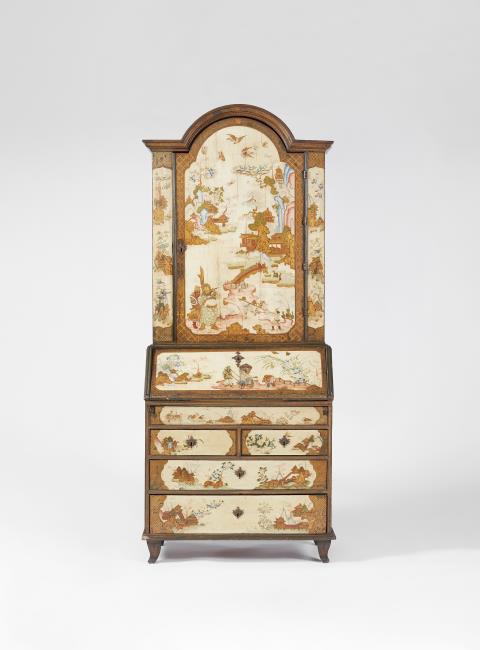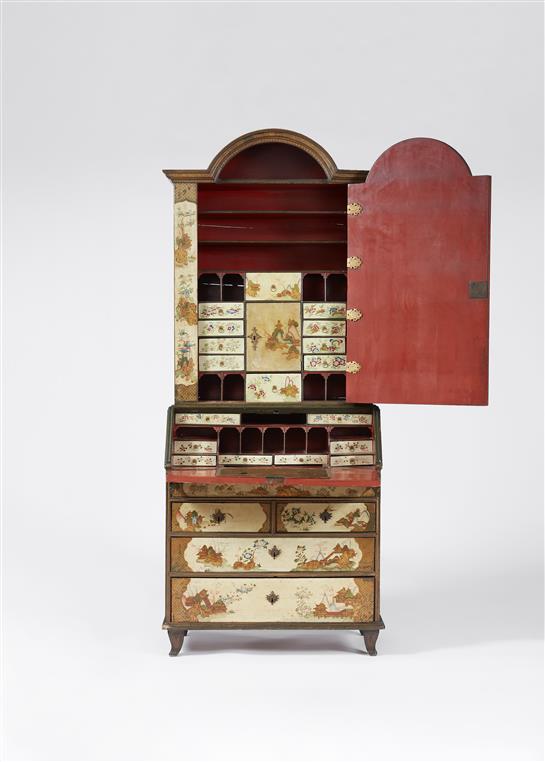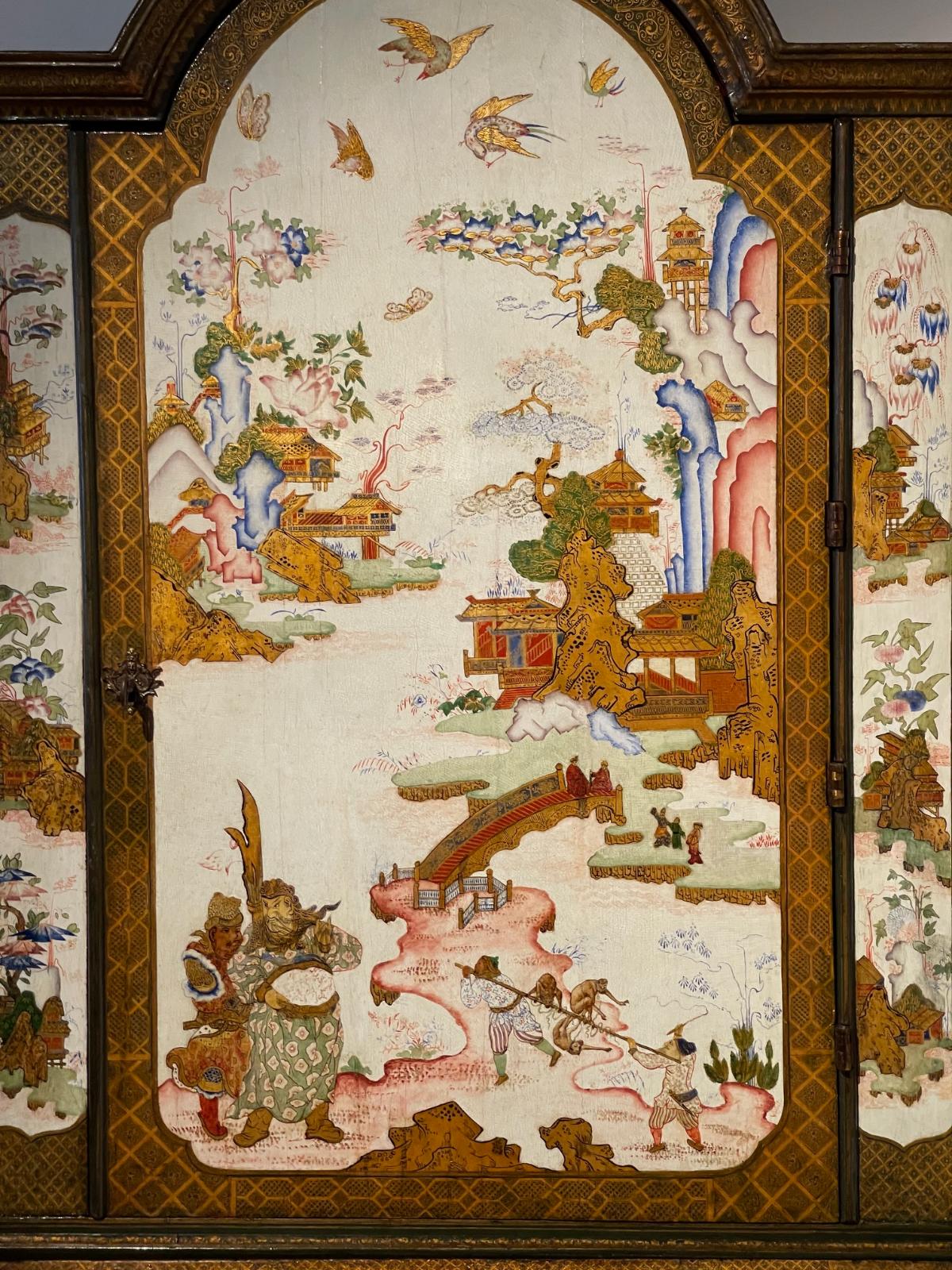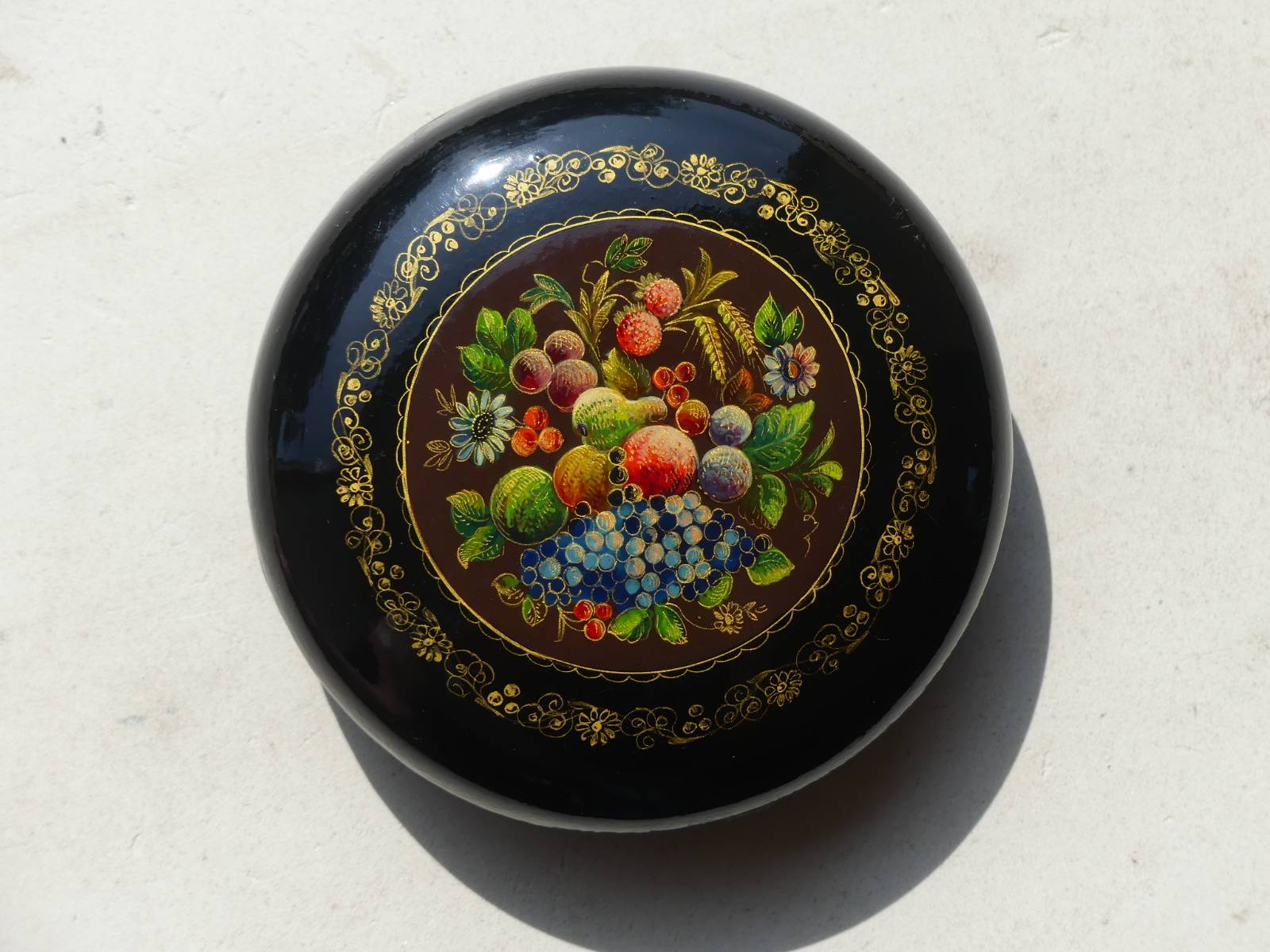Germany
by Kenta Takeshige
In the early 17th century, Oriental lacquerware was supplied to Germany from Portugal and Spain, and later from the Dutch East India Company. Berlin developed into a centre of lacquer production thanks to the workshop founded by Gérard Dagly, a native of Spa, Belgium. In the 1680s, he settled in Berlin and opened a furniture factory there in 1686 which was very successful. His furniture in the Baroque style was known up-to Paris as the "Berlin cabinet". His young brother Jacques Dagly joined him and participated in the success of the factory. In 1687 Gérard was appointed "Kammerkünstler" to Frederick William, the Great Elector of Brandenburg, who was succeeded in 1688 by Frederick III (later Frederick I, king of Prussia). During his reign Frederick gathered at his court many important artists and architects. Gérard was proclaimed "Director of Ornaments" in 1969; in this capacity he decorated rooms and furniture in the Berlin Palace. Imitating Oriental prototypes, he embellished Frederick’s palace with richly lacquered walls. 1
Through experimentation and invention, Gérard Dagly established and patented his own lacquer production method. The techniques of japanning used in various parts of Europe differed depending on each craftsman. Gérard Dagly specialized in making furniture coated ivory black. 2
The Chinese lacquerware called Coromandel Screen 3, is coated with a white chalk base to enhance the colour development of the colored lacquer on the surface. It is a so-called white primer. Gérard Dagly took a clue from this and applied white to the base of his japanning works. 4 He developed a Maki-e technique, which further decorated the ivory black applied surface, using the japanning technique.
Martin Schnell (c.1675-1740), who studied at Gérard Dagly's workshop, moved to Dresden in 1710 and worked under Augustus the Strong, Elector of Saxony.
He specialized in applying lacquer to porcelain objects, and also designed the interior decoration of the Japanese Palace in Dresden, where both lacquerware and porcelain collections were displayed.



Until that time, japanning had been a privileged part of the lives of royalty and aristocrats, but in the mid-18th century, japanning began to be produced for the general public as "Lacquer-Ware, Nuri-Mono".
In 1763, Johann Heinrich Stobwasser (1740-1829) started a lacquer workshop in Brunswick. His "good quality lacquer varnish at a fair price" was based on copal oil. Compared to Sandarac, which relied on imports, the supply of copal available within Europe was greater than that of the former. To avoid misunderstanding, we mention that even though these were lacquer crafts for the general public, they were quite expensive even at the time. It is true that the social class that could enjoy these "Nuri-Mono" was still limited to the wealthy.
The Brunswick City Museum exhibits the materials, processes and coatings of the lacquering method developed by Johann Heinrich Stobwasser. The manufacturing process for black lacquer is introduced below: 5
1) Melt petrified resin at 360℃, and drop the melted resin into a bottle of linseed oil to make copal oil. 6
2) Coat copal oil 30 times (layers) on the pulp (papier-mâché) base.
3) Place the finished piece in a stone furnace at 100℃ and bake for several hours. Then, the transparent paint turns jet black.
4) Draw a miniature picture on the lid surface and finish by applying copal oil over it.
The idea was changed from the previous method of making black lacquer by mixing black colouring material. A black lacquer was successfully developed by applying the heat and oxidation process. Snuff cases coated with this lacquer became one of Europe's most representative lacquer crafts, and were even introduced to Russia, where they are the basis of today's Russian lacquer boxes. 7

-
Monika Kopplin, "European Lacquer", Hirmer Verlag GmbH, 2010. Pg. 189-193. ↩
-
Kato Hiroshi, "Japanese lacquerware that crossed the seas 3 - Techniques and Expressions", Japanese Art no. 428, Shibundo, 2002. Pg. 75. (「海を渡った日本漆器」加藤寛 (技法と表現) 日本の美術No.428 至文堂 2002年) ↩
-
Carved Chalk or Coromandel Lacquer or Bantam Work: a technique in China for large furniture and folding screens. Firstly, applying chalk to the base material as a foundation. Next, lacquer is applied over it. In the end, patterns are drawn on the lacquer surface and the outline of the patterns are carved into the underlying chalk layer. Therefore it is called Carved Chalk. The carved patterns are filled with various colored lacquer and metal powder. The white foundation of the chalk brightens the colour of the applied lacquer. ↩
-
Margareta Prüch, "Eurorean Lacquer Art – A brief Introduction", Museum Für Lackkunst, Münster, 2019. Article on "World of Lacquer, Vessel & Form, 2019 Hubei International Triennial of Lacquer Art". (「大漆世界 器・象 2019年湖北国際漆芸三年展」) ↩
-
Quote: Kato Hiroshi, "Japanese lacquerware that crossed the seas 3 - Techniques and Expressions", Japanese Art no. 428, Shibundo, 2002. Pg. 75-78. (「海を渡った日本漆器」加藤寛 (技法と表現) 日本の美術No.428 至文堂 2002年) ↩
-
Since it says 360℃, it’s likely that "amber" is meant here. Amber melts or fracks at 300-350℃. ↩
-
Russian Lacquer Art evolved from the art of icon painting, which ended with the collapse of Imperial Russia. Having lost their patrons, icon painters needed a way to make a living by supplying household goods (popular decoration) not only to churches but also to the homes of ordinary people. In this way, the craft of making papier-mâché/wooden decorative boxes and panels developed, the items were lacquered and then hand painted by the artists, often with scenes from folk tales.
Icons are images (often two-dimensional) depicting Jesus Christ, saints, angels, important events and parables in the Bible, and events in church history. When speaking of icons, it often refers to those used in the Orthodox Church, and in some cases icons may be explained in a limited manner as belonging to the Orthodox Church. ↩
